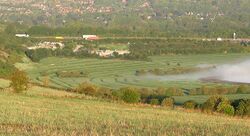| Display title | Engineering:Sewage farm |
| Default sort key | Sewage farm |
| Page length (in bytes) | 7,581 |
| Namespace ID | 3034 |
| Namespace | Engineering |
| Page ID | 2219600 |
| Page content language | en - English |
| Page content model | wikitext |
| Indexing by robots | Allowed |
| Number of redirects to this page | 0 |
| Counted as a content page | Yes |
| Page image |  |
| HandWiki item ID | None |
| Edit | Allow all users (infinite) |
| Move | Allow all users (infinite) |
| Page creator | imported>Nautica |
| Date of page creation | 13:30, 22 October 2022 |
| Latest editor | imported>Nautica |
| Date of latest edit | 13:30, 22 October 2022 |
| Total number of edits | 1 |
| Recent number of edits (within past 90 days) | 0 |
| Recent number of distinct authors | 0 |
Description | Content |
Article description: (description)
This attribute controls the content of the description and og:description elements. | Sewage farms use sewage for irrigation and fertilizing agricultural land. The practice is common in warm, arid climates where irrigation is valuable while sources of fresh water are scarce. Suspended solids may be converted to humus by microbes and bacteria in order to supply nitrogen, phosphorus and... |
